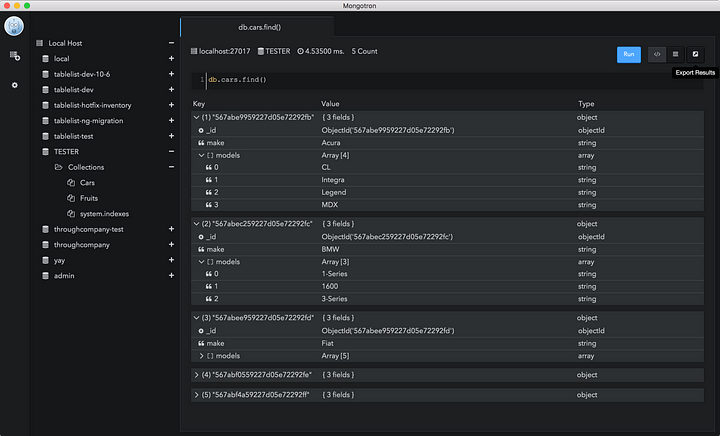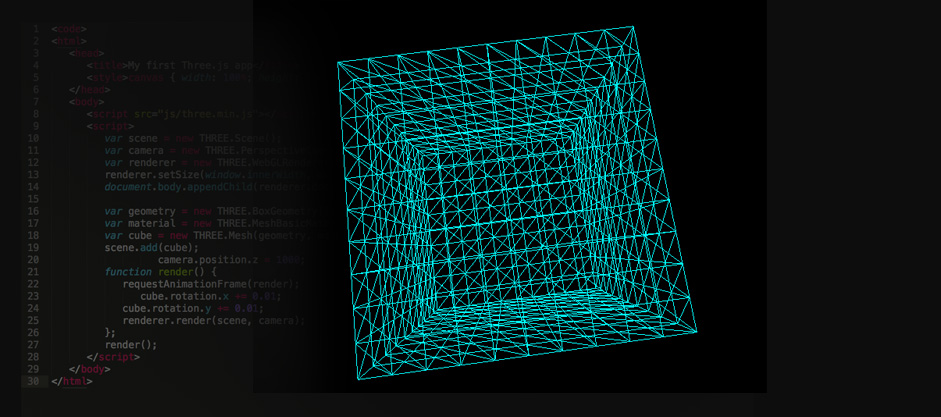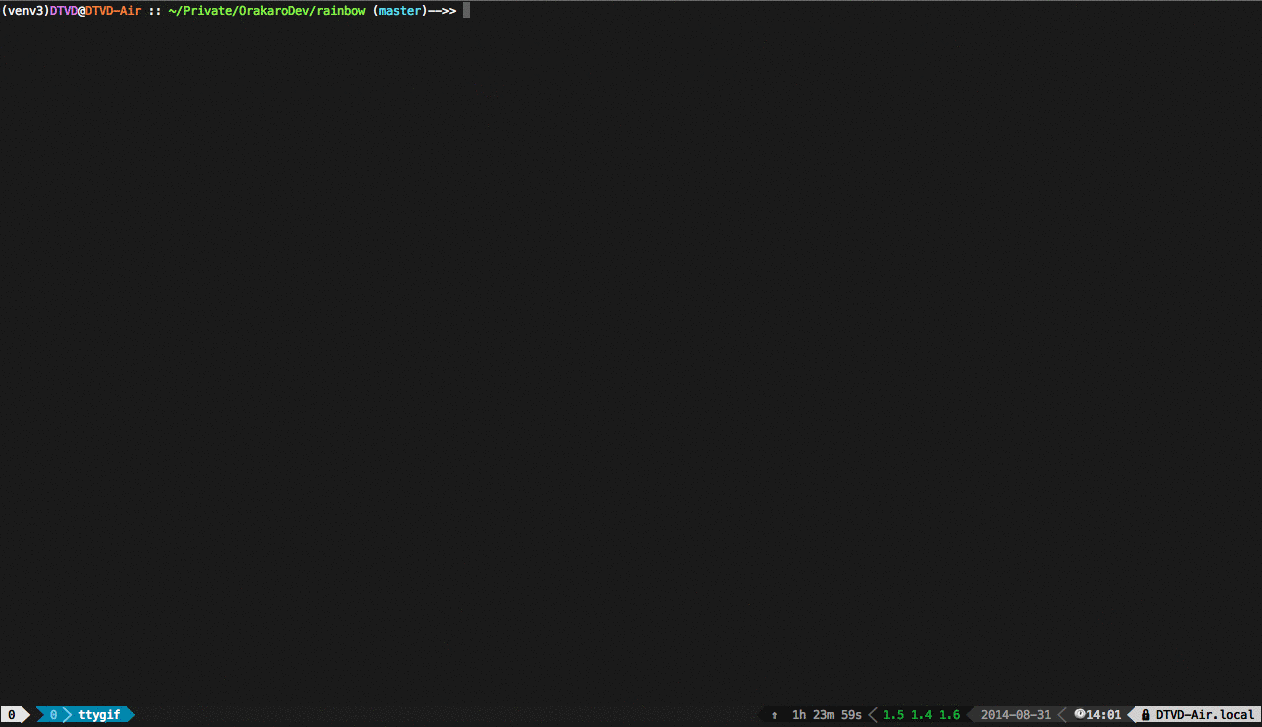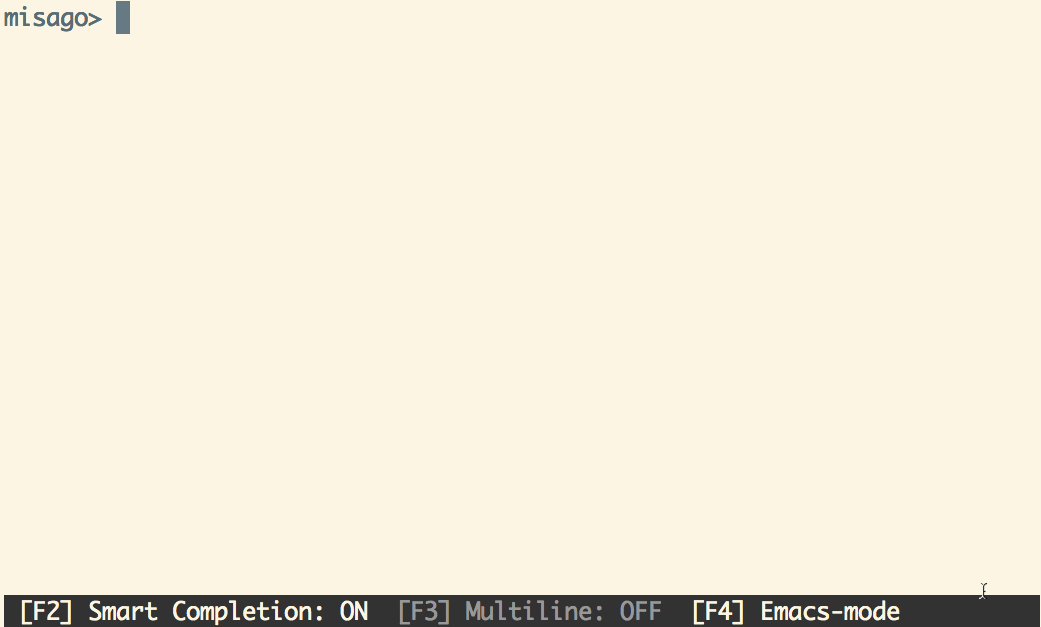If you are interested in Open Source and are considering to join the community of Open Source developers, it is possible that in this list you will find the project that will suit you.
We don't add to list mammoth's shit. Only active and interesting projects.
Wanna support us? Just share with a this list with your friends on Twitter, Facebook, Medium or somewhere else.
- Bash/Shell
- C/C++
- Clojure
- Common/Emacs Lisp
- Elixir
- Erlang
- Golang
- Haskell
- JavaScript
- Lua
- OCaml
- Python
- R
- Ruby
- Rust
- Scala
- Swift
git-secret — a bash tool to store your private data inside a git repo. How’s that? Basically, it just encrypts, using gpg, the tracked files with the public keys of all the users that you trust. So everyone of them can decrypt these files using only their personal secret key. Why deal with all this private-public keys stuff? Well, to make it easier for everyone to manage access rights. There are no passwords that change. When someone is out - just delete his public key, re-encrypt the files, and he won’t be able to decrypt secrets anymore.
dokku is an docker powered mini-Heroku. The smallest PaaS implementation you’ve ever seen.
pyenv lets you easily switch between multiple versions of Python. It’s simple, unobtrusive, and follows the UNIX tradition of single-purpose tools that do one thing well.
oh-my-zsh - a delightful community-driven (with 1,000+ contributors) framework for managing your zsh configuration. Includes 200+ optional plugins (rails, git, OSX, hub, capistrano, brew, ant, php, python, etc), over 140 themes to spice up your morning, and an auto-update tool so that makes it easy to keep up with the latest updates from the community.
Torch is a scientific computing framework with wide support for machine learning algorithms that puts GPUs first. It is easy to use and efficient, thanks to an easy and fast scripting language, LuaJIT, and an underlying C/CUDA implementation.
Caffe is a deep learning framework made with expression, speed, and modularity in mind. It is developed by the Berkeley Vision and Learning Center (BVLC) and community contributors.
libuv is a multi-platform support library with a focus on asynchronous I/O. It was primarily developed for use by Node.js, but it's also used by Luvit, Julia, pyuv, and others.
µWS is one of the most lightweight, efficient & scalable WebSocket server implementations available. It features an easy-to-use, fully async object-oriented interface and scales to millions of connections using only a fraction of memory compared to the competition. While performance and scalability are two of our top priorities, we consider security, stability and standards compliance paramount. License is zlib/libpng (very permissive & suits commercial applications).
RethinkDB — the first open-source scalable database built for realtime applications. It exposes a new database access model — instead of polling for changes, the developer can tell the database to continuously push updated query results to applications in realtime. RethinkDB allows developers to build scalable realtime apps in a fraction of the time with less effort.
Redis Desktop Manager — an Open source cross-platform Redis Desktop Manager based on Qt 5
Robomongo is a shell-centric cross-platform MongoDB management tool. Unlike most other MongoDB admin UI tools, Robomongo embeds the actual mongo shell in a tabbed interface with access to a shell command line as well as GUI interaction.
Lwan is a high-performance & scalable web server for glibc/Linux platforms.
In development for almost 4 years, Lwan was until now a personal research effort that focused mostly on building a solid infrastructure for a lightweight and speedy web server:
- Low memory footprint (~500KiB for 10k idle connections)
- Minimal memory allocations & copies
- Minimal system calls
- Hand-crafted HTTP request parser
- Files are served using the most efficient way according to their size
- No copies between kernel and userland for files larger than 16KiB
- Smaller files are sent using vectored I/O of memory-mapped buffers
- Header overhead is considered before compressing small files
- Mostly wait-free multi-threaded design
- Diminute code base with roughly 7200 lines of C code
It is now transitioning into a fully working, capable HTTP server. It is not, however, as feature-packed as other popular web servers. But it is free software, so scratching your own itches and making Lwan hum the way you want it to is possible.
netdata is a system for distributed real-time performance and health monitoring. It provides unparalleled insights, in real-time, of everything happening on the system it runs (including applications such as web and database servers), using modern interactive web dashboards.
netdata is fast and efficient, designed to permanently run on all systems (physical & virtual servers, containers, IoT devices), without disrupting their core function.
Metabase is the easy, open source way for everyone in your company to ask questions and learn from data.
compojure — a small routing library for Ring that allows web applications to be composed of small, independent parts.
This small Compojure application demonstrates creating a Ring handler from two routes:
(ns hello-world.core
(:require [compojure.core :refer :all]
[compojure.route :as route]))
(defroutes app
(GET "/" [] "<h1>Hello World</h1>")
(route/not-found "<h1>Page not found</h1>"))Aleph exposes data from the network as a Manifold stream, which can easily be transformed into a java.io.InputStream, core.async channel, Clojure sequence, or many other byte representations. It exposes simple default wrappers for HTTP, TCP, and UDP, but allows access to full performance and flexibility of the underlying Netty library.
Datascript — an immutable in-memory database and Datalog query engine in Clojure and ClojureScript.
Quil is a Clojure/ClojureScript library for creating interactive drawings and animations.
yada — a web library for Clojure, designed to support the creation of production services via HTTP.
Typically, yada handlers are created from a configuation expressed in data.
(require '[yada.yada :as yada])
(yada/handler
{:methods
{:get
{:produces "text/html"
:response "<h1>Hello World!</h1>"}}})Hoplon — a set of tools and libraries for making web applications.
Ring is a Clojure web applications library inspired by Python's WSGI and Ruby's Rack. By abstracting the details of HTTP into a simple, unified API, Ring allows web applications to be constructed of modular components that can be shared among a variety of applications, web servers, and web frameworks.
Magit is an interface to the version control system Git, implemented as an Emacs package. Magit aspires to be a complete Git porcelain. While we cannot claim that Magit wraps and improves upon each and every Git command, it is complete enough to allow even experienced Git users to perform almost all of their daily version control tasks directly from within Emacs. While many fine Git clients exist, only Magit and Git itself deserve to be called porcelains.
Woo is a fast non-blocking HTTP server built on top of libev. Although Woo is written in Common Lisp, it aims to be the fastest web server written in any programming language.
How fast?
Clack is a web application environment for Common Lisp inspired by Python’s WSGI and Ruby’s Rack.
Example:
(defvar *handler*
(clack:clackup
(lambda (env)
(declare (ignore env))
'(200 (:content-type "text/plain") ("Hello, Clack!")))))Alchemist — an Elixir Tooling Integration Into Emacs. Alchemist comes with a bunch of features, which are:
- Mix integration
- Compile & Execution of Elixir code
- Inline code evaluation
- Inline macro expanding
- Documentation lookup
- Definition lookup
- Powerful IEx integration
- Smart code completion
- Elixir project management
- Phoenix support
- Integration with company-mode
Phoenix — Productive. Reliable. Fast. A productive web framework that does not compromise speed and maintainability.
credo — a static code analysis tool for the Elixir language with a focus on teaching and code consistency.
guardian — an authentication framework for use with Elixir applications. Guardian is based on similar ideas to Warden but is re-imagined for modern systems where Elixir manages the authentication requirements.
Guardian remains a functional system. It integrates with Plug, but can be used outside of it. If you’re implementing a TCP/UDP protocol directly, or want to utilize your authentication via channels, Guardian is your friend. The core currency of authentication in Guardian is JSON Web Tokens (JWT). You can use the JWT to authenticate web endpoints, channels, and TCP sockets and it can contain any authenticated assertions that the issuer wants to include.
httpoison — yet another HTTP client for Elixir powered by hackney.
maru — an Elixir RESTful Framework
Example:
defmodule Router.User do
use Maru.Router
namespace :user do
route_param :id do
get do
json(conn, %{ user: params[:id] })
end
desc "description"
params do
requires :age, type: Integer, values: 18..65
requires :gender, type: Atom, values: [:male, :female], default: :female
group :name, type: Map do
requires :first_name
requires :last_name
end
optional :intro, type: String, regexp: ~r/^[a-z]+$/
optional :avatar, type: File
optional :avatar_url, type: String
exactly_one_of [:avatar, :avatar_url]
end
post do
...
end
end
end
end
defmodule Router.Homepage do
use Maru.Router
resources do
get do
json(conn, %{ hello: :world })
end
mount Router.User
end
end
defmodule MyAPP.API do
use Maru.Router
before do
plug Plug.Logger
plug Plug.Static, at: "/static", from: "/my/static/path/"
end
plug Plug.Parsers,
pass: ["*/*"],
json_decoder: Poison,
parsers: [:urlencoded, :json, :multipart]
mount Router.Homepage
rescue_from Unauthorized, as: e do
IO.inspect e
conn
|> put_status(401)
|> text("Unauthorized")
end
rescue_from [MatchError, RuntimeError], with: :custom_error
rescue_from :all do
conn
|> put_status(500)
|> text("Server Error")
end
defp custom_error(conn, exception) do
conn
|> put_status(500)
|> text(exception.message)
end
endhound — an Elixir library for writing integration tests and browser automation.
ExUnit example:
defmodule HoundTest do
use ExUnit.Case
use Hound.Helpers
hound_session
test "the truth", meta do
navigate_to("http://example.com/guestbook.html")
element = find_element(:name, "message")
fill_field(element, "Happy Birthday ~!")
submit_element(element)
assert page_title() == "Thank you"
end
enddistillery — a pure Elixir implementation of release packaging functionality for the Erlang VM (BEAM). Every alchemist requires good tools, and one of the greatest tools in the alchemist’s disposal is the distillery. The purpose of the distillery is to take something and break it down to it’s component parts, reassembling it into something better, more powerful. That is exactly what this project does — it takes your Mix project and produces an Erlang/OTP release, a distilled form of your raw application’s components; a single package which can be deployed anywhere, independently of an Erlang/Elixir installation. No dependencies, no hassle.
This is a pure-Elixir, dependency-free implementation of release generation for Elixir projects. It is currently a standalone package, but may be integrated into Mix at some point in the future.
timex — a rich, comprehensive Date/Time library for Elixir projects, with full timezone support via the :tzdata package. If you need to manipulate dates, times, datetimes, timestamps, etc., then Timex is for you! It is very easy to use Timex types in place of default Erlang types, as well as Ecto types via the timex_ecto package.
Here’s a few simple examples:
> use Timex
> Timex.today
~D[2016-02-29]
> datetime = Timex.now
#<DateTime(2016-02-29T12:30:30.120+00:00Z Etc/UTC)
> Timex.now("America/Chicago")
#<DateTime(2016-02-29T06:30:30.120-06:00 America/Chicago)
> Duration.now
#<Duration(P46Y6M24DT21H57M33.977711S)>
> {:ok, default_str} = Timex.format(datetime, "{ISO:Extended}")
{:ok, "2016-02-29T12:30:30.120+00:00"}
> {:ok, relative_str} = Timex.shift(datetime, minutes: -3) |> Timex.format("{relative}", :relative)
{:ok, "3 minutes ago"}
> strftime_str = Timex.format!(datetime, "%FT%T%:z", :strftime)
"2016-02-29T12:30:30+00:00"
> Timex.parse(default_str, "{ISO:Extended}")
{:ok, #<DateTime(2016-02-29T12:30:30.120+00:00 Etc/Utc)}
> Timex.parse!(strftime_str, "%FT%T%:z", :strftime)
#<DateTime(2016-02-29T12:30:30.120+00:00 Etc/Utc)
> Duration.diff(Duration.now, Duration.zero, :days)
16850
> Timex.shift(date, days: 3)
~D[2016-03-03]
> Timex.shift(datetime, hours: 2, minutes: 13)
#<DateTime(2016-02-29T14:43:30.120Z Etc/UTC)>
> timezone = Timezone.get("America/Chicago", Timex.now)
#<TimezoneInfo(America/Chicago - CDT (-06:00:00))>
> Timezone.convert(datetime, timezone)
#<DateTime(2016-02-29T06:30:30.120-06:00 America/Chicago)>
> Timex.before?(Timex.today, Timex.shift(Timex.today, days: 1))
true
> Timex.before?(Timex.shift(Timex.today, days: 1), Timex.today)
falseex_admin — an add on for an application using the Phoenix Framework to create an CRUD administration tool with little or no code. By running a few mix tasks to define which Ecto Models you want to administer, you will have something that works with no additional code.
kitto — a framework to help you create dashboards, written in Elixir/React.
Cowboy — a small, fast and modern HTTP server for Erlang/OTP. I think that everyone who interested in Erlang heard about a cowboy.
VerneMQ — a high-performance, distributed MQTT message broker. It scales horizontally and vertically on commodity hardware to support a high number of concurrent publishers and consumers while maintaining low latency and fault tolerance. VerneMQ is the reliable message hub for your IoT platform or smart products.
ejabberd is a distributed, fault-tolerant technology that allows the creation of large-scale instant messaging applications. The server can reliably support thousands of simultaneous users on a single node and has been designed to provide exceptional standards of fault tolerance. As an open source technology, based on industry-standards, ejabberd can be used to build bespoke solutions very cost effectively.
emqttd — a massively scalable and clusterable MQTT V3.1/V3.1.1 broker written in Erlang/OTP.
MongooseIM is robust and efficient XMPP platform aimed at large installations. Specifically designed for enterprise purposes, it is fault-tolerant, can utilize resources of multiple clustered machines and easily scale in need of more capacity (by just adding a box/VM). MongooseIM can accept client sessions over vanilla XMPP, Websockets, HTTP long-polling (a.k.a. BOSH), and a REST API.
The MongooseIM platform comes with server-side components and client libraries. We provide a test suite and a monitoring server. We recommand third-party, open source client libraries for XMPP and REST API.
RabbitMQ is open source message broker software (sometimes called message-oriented middleware) that implements the Advanced Message Queuing Protocol (AMQP). The RabbitMQ server is written in the Erlang programming language and is built on the Open Telecom Platform framework for clustering and failover. Client libraries to interface with the broker are available for all major programming languages.
Zotonic is the open source, high speed, real-time web framework and content management system, built with Erlang.
It is flexible, extensible and designed from the ground up to support dynamic, interactive websites and mobile solutions.
Zotonic is incredibly fast and wonderfully stable – suited for anything from basic websites to complex distributed applications. It offers an elegant backend for managing content with the flexibility that developers need to build truly amazing applications.
Cayley is an open-source graph inspired by the graph database behind Freebase and Google’s Knowledge Graph.
Its goal is to be a part of the developer’s toolbox where Linked Data and graph-shaped data (semantic webs, social networks, etc) in general are concerned.
Kubernetes is an open source system for managing containerized applications across multiple hosts, providing basic mechanisms for deployment, maintenance, and scaling of applications. Kubernetes is hosted by the Cloud Native Computing Foundation.
Kubernetes builds upon a decade and a half of experience at Google running production workloads at scale using a system called Borg, combined with best-of-breed ideas and practices from the community.
cobra — a library for creating powerful modern CLI applications as well as a program to generate applications and command files.
Hyperd is a hypervisor-agnostic technology that allows you to run Docker images on plain hypervisor.
Terraform is a tool for building, changing, and versioning infrastructure safely and efficiently. Terraform can manage existing and popular service providers as well as custom in-house solutions.
gago — genetic algorithm toolkit written in Go. The following example attempts to minimize the Drop-Wave function.
Hugo — a static HTML and CSS website generator written in Go. It is optimized for speed, easy use and configurability. Hugo takes a directory with content and templates and renders them into a full HTML website.
Gin is a web framework written in Go. It features a martini-like API with much better performance, up to 40 times faster thanks to httprouter. If you need performance and good productivity, you will love Gin.
gobot — a framework using the Go programming language for robotics, physical computing, and the Internet of Things.
utron is a lightweight MVC framework in Go (Golang) for building fast, scalable and robust database-driven web applications.
Caddy — a general-purpose web server for Windows, Mac, Linux, BSD, and Android. It is a capable but easier alternative to other popular web servers.
**gogs ** — Gogs (Go Git Service) is a painless self-hosted Git service.
tile38 — an open source, in-memory geolocation data store, spatial index, and realtime geofence. It supports a variety of object types including lat/lon points, bounding boxes, XYZ tiles, Geohashes, and GeoJSON.
logrus — a structured logger for Golang, completely API compatible with the standard library logger.
traefik — a modern HTTP reverse proxy and load balancer made to deploy microservices with ease. It supports several backends (Docker, Swarm, Kubernetes, Marathon, Mesos, Consul, Etcd, Zookeeper, BoltDB, Eureka, Rest API, file…) to manage its configuration automatically and dynamically.
dry — a terminal application to manage Docker containers and images. It aims to be an alternative to the official Docker CLI when it is needed to repeatedly execute commands on existing containers and images, and also as a tool to monitor Docker containers from a terminal.
pgweb — Web-based PostgreSQL database browser written in Go.
rkt (pronounced "rock-it") is a CLI for running app containers on Linux. rkt is designed to be secure, composable, and standards-based.
Some of rkt's key features and goals include:
- Security: rkt is developed with a principle of "secure-by-default", and includes a number of important security features like support for SELinux, TPM measurement, and running app containers in hardware-isolated VMs.
- Composability: rkt is designed for first-class integration with init systems (systemd, upstart) and cluster orchestration tools (fleet, Kubernetes, Nomad), and supports swappable execution engines.
- Open standards and compatibility: rkt implements the appc specification, supports the Container Networking Interface specification, can also run Docker images, and OCI images via docker2aci. Native OCI image support is in development.
Pandoc is a Haskell library for converting from one markup format to another, and a command-line tool that uses this library. It can read Markdown, CommonMark, PHP Markdown Extra, GitHub-Flavored Markdown, MultiMarkdown, and (subsets of) Textile, reStructuredText, HTML, LaTeX, MediaWiki markup, TWiki markup, Haddock markup, OPML, Emacs Org mode, DocBook, txt2tags, EPUB, ODT and Word docx; and it can write plain text, Markdown, CommonMark, PHP Markdown Extra,GitHub-Flavored Markdown, MultiMarkdown, reStructuredText, XHTML, HTML5, LaTeX (including beamer slide shows), ConTeXt, RTF, OPML, DocBook, OpenDocument, ODT, Word docx, GNU Texinfo, MediaWiki markup, DokuWiki markup, ZimWiki markup, Haddock markup, EPUB (v2 or v3), FictionBook2, Textile, groff man pages, Emacs Org mode, AsciiDoc, InDesign ICML, TEI Simple, and Slidy, Slideous, DZSlides, reveal.js or S5 HTML slide shows. It can also produce PDF output on systems where LaTeX, ConTeXt, or wkhtmltopdf is installed.
Yesod — an advanced RESTful web framework using the Haskell programming language.
hadolint — a smarter Dockerfile linter that helps you build best practice Docker images. The linter is parsing the Dockerfile into an AST and performs rules on top of the AST. hadolint written in Haskell.
postgrest — PostgREST serves a fully RESTful API from any existing PostgreSQL database. It provides a cleaner, more standards-compliant, faster API than you are likely to write from scratch. PostgREST written in Haskell.
medium-editor - Medium.com WYSIWYG editor clone. Uses contenteditable API to implement a rich text solution.
Chart.js — a simple HTML5 Charts using the canvas element.
Chart.js provides two different builds that are available for your use. The Chart.js and Chart.min.js files include Chart.js and the accompanying color parsing library. If this version is used and you require the use of the time axis, Moment.js will need to be included before Chart.js.
Moment.js — a lightweight JavaScript date library for parsing, validating, manipulating, and formatting dates.
D3 — a JavaScript library for visualizing data using web standards. D3 helps you bring data to life using SVG, Canvas and HTML. D3 combines powerful visualization and interaction techniques with a data-driven approach to DOM manipulation, giving you the full capabilities of modern browsers and the freedom to design the right visual interface for your data.
**N1 ** — an open-source mail client built on the modern web with Electron, React, and Flux. It is designed to be extensible, so it’s easy to create new experiences and workflows around email. N1 is built on the Nylas Sync Engine, which is also open-source free software.
Enzyme is a JavaScript Testing utility for React that makes it easier to assert, manipulate, and traverse your React Components’ output.
Enzyme’s API is meant to be intuitive and flexible by mimicking jQuery’s API for DOM manipulation and traversal.
Enzyme is unopinionated regarding which test runner or assertion library you use, and should be compatible with all major test runners and assertion libraries out there. The documentation and examples for enzyme use mocha and chai, but you should be able to extrapolate to your framework of choice.
sigma.js — a JavaScript library dedicated to graph drawing.
strider — an Open Source Continuous Deployment / Continuous Integration platform. It is written in Node.JS / JavaScript and uses MongoDB as a backing store. It is published under the BSD license.
eme — an elegant Markdown editor.
async — a utility module which provides straight-forward, powerful functions for working with asynchronous JavaScript. Although originally designed for use with Node.js and installable via npm install --save async, it can also be used directly in the browser.
**Mongotron ** — a MongoDB GUI built using Electron, and Angular JS.
Three.js is a cross-browser JavaScript library/API used to create and display animated 3D computer graphics in a web browser. Three.js uses WebGL.
**middleclass ** — a simple OOP library for Lua. It has inheritance, metamethods (operators), class variables and weak mixin support.
Quick look:
local class = require 'middleclass'
local Fruit = class('Fruit') -- 'Fruit' is the class' name
function Fruit:initialize(sweetness)
self.sweetness = sweetness
end
Fruit.static.sweetness_threshold = 5 -- class variable (also admits methods)
function Fruit:isSweet()
return self.sweetness > Fruit.sweetness_threshold
end
local Lemon = class('Lemon', Fruit) -- subclassing
function Lemon:initialize()
Fruit.initialize(self, 1) -- invoking the superclass' initializer
end
local lemon = Lemon:new()
print(lemon:isSweet()) -- falseluarocks — a package manager for Lua modules.
**telize ** — a REST API built on Nginx and Lua allowing to get a visitor IP address and to query location information from any IP address. It outputs JSON-encoded IP geolocation data, and supports both JSON and JSONP.
t e l i z e
_______________________
______\ /_______
\\ \\ ___ // /
__ \ ____ \ __ / \ _____/\ / ____
___/ \____/ _//____/ \___\___/___\__ /__/ _//____
\\__ ____ __/ __ __ ____ ____ __/ __///
/ \_ |/ \_ / \/ /_/ |/ \_
\\\ ___/\___ /____/\_______/\ ___/\___ /
<0(--- \__/ -h7- \______/ \ . \__/ ---- \______/ --(0>
\ .\ /. .
\ .\ // /
\______\\ //______/
Y
**lor ** — a fast and minimalist web framework based on OpenResty.
Example:
local lor = require("lor.index")
local app = lor()
app:get("/", function(req, res, next)
res:send("hello world!")
end)
app:run()**pegasus.lua ** — a http server to work with web applications written in Lua language.
OpenResty — a full-fledged web platform by integrating the standard Nginx core, LuaJIT, many carefully written Lua libraries, lots of high quality 3rd-party Nginx modules, and most of their external dependencies. It is designed to help developers easily build scalable web applications, web services, and dynamic web gateways.
Coq is a formal proof management system. It provides a formal language to write mathematical definitions, executable algorithms and theorems together with an environment for semi-interactive development of machine-checked proofs.
TensorFlow — an open source software library for numerical computation using data flow graphs. Nodes in the graph represent mathematical operations, while the graph edges represent the multidimensional data arrays (tensors) that flow between them. This flexible architecture lets you deploy computation to one or more CPUs or GPUs in a desktop, server, or mobile device without rewriting code. TensorFlow also includes TensorBoard, a data visualization toolkit.
Elizabeth - is a fast and easier to use Python library for generating dummy data. These data are very useful when you need to bootstrap the database in the testing phase of your software. A great example of how you can use the library are web applications on Flask or Django which need a data, such as users (email, username, name, surname etc.), posts (tags, text, title, publishing date and etc.) and so forth. The library uses the JSON files as a datastore and doesn’t have any dependencies. The library offers more than 18 different data providers (from personal ones to transport and more).
Below you can see, how to generate fake paths using Elizabeth:
>>> from elizabeth import Path
>>> path = Path()
>>> path.root
'/'
>>> path.home
'/home/'
>>> path.user(gender='female')
'/home/chieko'
>>> path.users_folder(user_gender='male')
'/home/lyndon/Documents'
>>> path.dev_dir(user_gender='female')
'/home/edra/Development/Ruby'
>>> path.project_dir(user_gender='female')
'/home/katharina/Development/C Shell/litany'or how to generate dummy model of transport:
>>> from elizabeth import Transport
>>> transport = Transport()
>>> transport.truck()
'Union-0632 FX'
>>> transport.truck(model_mask="##/@")
'Jiaotong-78/P'
>>> transport.car()
'Pontiac Grand Am'
>>> transport.airplane()
'Boeing 575'
>>> transport.airplane(model_mask="7##")
'Airbus 778'The Numenta Platform for Intelligent Computing (NUPIC) is a machine intelligence platform that implements the HTM learning algorithms. HTM is a detailed computational theory of the neocortex. At the core of HTM are time-based continuous learning algorithms that store and recall spatial and temporal patterns. NuPIC is suited to a variety of problems, particularly anomaly detection and prediction of streaming data sources.
expynen t is a tiny library that provides RegEx patterns. This can be useful if you don't want to write regular expression manually.
Examples:
import re
import expynent.patterns as expas
if re.match(expas.ZIP_CODE['RU'], '43134'):
print('match')
else:
print('not match')
# Output: 'not match'also you can use compiled patterns:
from expynent.compiled import username
u = input('Enter username: ')
if username.match(u):
print('valid')
else:
print('invalid')Universe is a software platform for measuring and training an AI’s general intelligence across the world’s supply of games, websites and other applications. This is the universe open-source library, which provides a simple Gym interface to each Universe environment.
**Theano ** — a Python library that allows you to define, optimize, and evaluate mathematical expressions involving multi-dimensional arrays efficiently. It can use GPUs and perform efficient symbolic differentiation.
http-prompt — an interactive command-line HTTP client featuring autocomplete and syntax highlighting.
falcon — is a high-performance Python framework for building cloud APIs. It encourages the REST architectural style, and tries to do as little as possible while remaining highly effective.
eve — an open source Python REST API framework designed for human beings. It allows to effortlessly build and deploy highly customizable, fully featured RESTful Web Services.
Eve is powered by Flask, Redis, Cerberus, Events and offers support for both MongoDB and SQL backends.
Example:
from eve import Eve
app = Eve()
app.run()The API is now live, ready to be consumed:
$ curl -i http://example.com/people
HTTP/1.1 200 OK
plotly.py — an interactive, browser-based charting library for Python.
cerberus — a lightweight and extensible data validation library for Python.
>>> v = Validator({'name': {'type': 'string'}})
>>> v.validate({'name': 'john doe'})
True**Rainbow Stream ** — is a terminal-based Twitter Client. Realtime tweetstream, compose, search, favorite … and much more fun directly from terminal.
the fuck — is a magnificent app which corrects your previous console command.
pgcli — Postgres CLI with autocompletion and syntax highlighting. pgcli written in Python.
Pendulum — Python datetimes made easy.
Example:
>>> import pendulum
>>> now_in_paris = pendulum.now('Europe/Paris')
>>> now_in_paris
'2016-07-04T00:49:58.502116+02:00'
# Seamless timezone switching
>>> now_in_paris.in_timezone('UTC')
'2016-07-03T22:49:58.502116+00:00'
>>> tomorrow = pendulum.now().add(days=1)
>>> last_week = pendulum.now().subtract(weeks=1)
>>> if pendulum.now().is_weekend():
... print('Party!')
'Party!'
>>> past = pendulum.now().subtract(minutes=2)
>>> past.diff_for_humans()
>>> '2 minutes ago'
>>> delta = past - last_week
>>> delta.hours
23
>>> delta.in_words(locale='en')
'6 days 23 hours 58 minutes'
# Proper handling of datetime normalization
>>> pendulum.create(2013, 3, 31, 2, 30, 0, 0, 'Europe/Paris')
'2013-03-31T03:30:00+02:00' # 2:30 does not exist (Skipped time)
# Proper handling of dst transitions
>>> just_before = pendulum.create(2013, 3, 31, 1, 59, 59, 999999, 'Europe/Paris')
'2013-03-31T01:59:59.999999+01:00'
>>> just_before.add(microseconds=1)
'2013-03-31T03:00:00+02:00'python-prompt-toolkit — a library for building powerful interactive command lines and terminal applications in Python.
superset — a data exploration platform designed to be visual, intuitive and interactive.
astropy — a package intended to contain much of the core functionality and some common tools needed for performing astronomy and astrophysics with Python.
httpie — a command line HTTP client. Its goal is to make CLI interaction with web services as human-friendly as possible. It provides a simple http command that allows for sending arbitrary HTTP requests using a simple and natural syntax, and displays colorized output. HTTPie can be used for testing, debugging, and generally interacting with HTTP servers.
compose — a tool for defining and running multi-container Docker applications. With Compose, you use a Compose file to configure your application’s services. Then, using a single command, you create and start all the services from your configuration.
keras — a high-level neural networks library, written in Python and capable of running on top of either TensorFlow or Theano. It was developed with a focus on enabling fast experimentation.
bokeh — a Python interactive visualization library, enables beautiful and meaningful visual presentation of data in modern web browsers. With Bokeh, you can quickly and easily create interactive plots, dashboards, and data applications.
Records is a very simple, but powerful, library for making raw SQL queries to most relational databases.
Just write SQL. No bells, no whistles. This common task can be surprisingly difficult with the standard tools available. This library strives to make this workflow as simple as possible, while providing an elegant interface to work with your query results.
Example:
import records
db = records.Database('postgres://...')
rows = db.query('select * from active_users')
>>> rows[0]
<Record {"username": "model-t", "active": true, "name": "Henry Ford", "user_email": "model-t@gmail.com", "timezone": "2016-02-06 22:28:23.894202"}>coala provides a unified command-line interface for linting and fixing all your code, regardless of the programming languages you use.
With coala, users can create rules and standards to be followed in the source code. coala has an user-friendly interface that is completely customizable. It can be used in any environment and is completely modular.
coala has a set of official bears (plugins) for several languages, including popular languages such as C/C++, Python, JavaScript, CSS, Java and many more, in addition to some generic language independent algorithms. To learn more about the different languages supported and the bears themselves, click here.
Sanic is a Flask-like Python 3.5+ web server that's written to go fast. It's based on the work done by the amazing folks at magicstack, and was inspired by this article: https://magic.io/blog/uvloop-blazing-fast-python-networking/.
On top of being Flask-like, Sanic supports async request handlers. This means you can use the new shiny async/await syntax from Python 3.5, making your code non-blocking and speedy.
Example:
from sanic import Sanic
from sanic.response import json
app = Sanic()
@app.route("/")
async def test(request):
return json({"hello": "world"})
if __name__ == "__main__":
app.run(host="0.0.0.0", port=8000)Locust is an easy-to-use, distributed, user load testing tool. It is intended for load-testing web sites (or other systems) and figuring out how many concurrent users a system can handle.
The idea is that during a test, a swarm of locusts will attack your website. The behavior of each locust (or test user if you will) is defined by you and the swarming process is monitored from a web UI in real-time. This will help you battle test and identify bottlenecks in your code before letting real users in.
Locust is completely event-based, and therefore it's possible to support thousands of concurrent users on a single machine. In contrast to many other event-based apps it doesn't use callbacks. Instead it uses light-weight processes, through gevent. Each locust swarming your site is actually running inside its own process (or greenlet, to be correct). This allows you to write very expressive scenarios in Python without complicating your code with callbacks.
py.test framework makes it easy to write small tests, yet scales to support complex functional testing for applications and libraries.
An example of a simple test:
def inc(x):
return x + 1
def test_answer():
assert inc(3) == 5uvloop is a fast, drop-in replacement of the built-in asyncio event loop. uvloop is implemented in Cython and uses libuv under the hood.
Shiny is a new package from RStudio that makes it incredibly easy to build interactive web applications with R.
plotly — an R package for creating interactive web graphics via the open source JavaScript graphing library plotly.js.
Slim is a template language whose goal is to reduce the view syntax to the essential parts without becoming cryptic. It started as an exercise to see how much could be removed from a standard html template (<, >, closing tags, etc...). As more people took an interest in Slim, the functionality grew and so did the flexibility of the syntax.
Capybara helps you test web applications by simulating how a real user would interact with your app. It is agnostic about the driver running your tests and comes with Rack::Test and Selenium support built in. WebKit is supported through an external gem.
redox — an operating system written in Rust, a language with focus on safety and high performance. Redox, following the microkernel design, aims to be secure, usable, and free. Redox is inspired by previous kernels and operating systems, such as SeL4, Minix, Plan 9, and BSD.
GitBucket — a Git platform powered by Scala with easy installation, high extensibility & github API compatibility.
Finatra — a lightweight framework for building fast, testable, scala applications on top of TwitterServer and Finagle. Finatra provides an easy-to-use API for creating and testing Finagle servers and apps as well as powerful JSON support, modern logging via SLF4J, Finagle client utilities, and more.
Scalatra is a tiny, Sinatra-like web framework for Scala.
Example:
import org.scalatra._
class ScalatraExample extends ScalatraServlet {
get("/") {
<h1>Hello, world!</h1>
}
}algebird — an abstract algebra for Scala. This code is targeted at building aggregation systems (via Scalding or Apache Storm). It was originally developed as part of Scalding’s Matrix API, where Matrices had values which are elements of Monoids, Groups, or Rings. Subsequently, it was clear that the code had broader application within Scalding and on other projects within Twitter.
Eureka is an elegant iOS form builder in Swift.
Alamofire — an HTTP networking library written in Swift.
Kingfisher is a lightweight, pure-Swift library for downloading and caching images from the web. This project is heavily inspired by the popular SDWebImage. It provides you a chance to use a pure-Swift alternative in your next app.
Quick is a behavior-driven development framework for Swift and Objective-C. Inspired by RSpec, Specta, and Ginkgo.
SwiftLint — a tool to enforce Swift style and conventions.
Kitura is a web framework and web server that is created for web services written in Swift. For more information, visit www.kitura.io.
Vapor — the most used web framework for Swift. It provides a beautifully expressive and easy to use foundation for your next website, API, or cloud project.
awesomeo by @lk-geimfari
To the extent possible under law, the person who associated CC0 with awesomeo has waived all copyright and related or neighboring rights to awesomeo.
You should have received a copy of the CC0 legalcode along with this work. If not, see https://creativecommons.org/publicdomain/zero/1.0/.



























































































